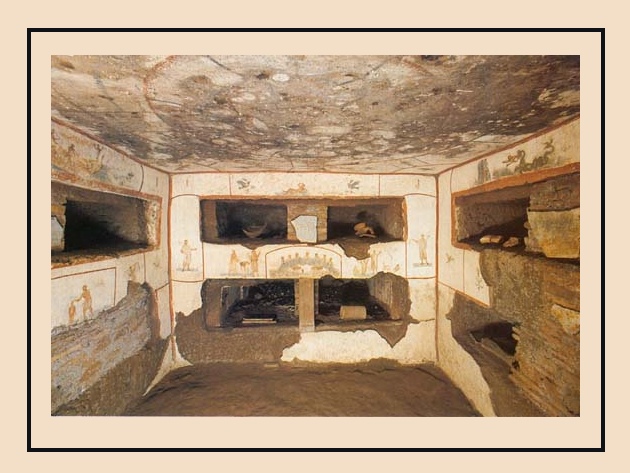
The Catacombs of San Callisto represent the oldest and best preserved cemetery unit on Via Appia; the complex owes its name to the martyr pope Saint Callistus (217-222), who, before his pontificate, was appointed by pope Zephyrinus (199-217) to the administration of the cemetery, considered the official burial place of the Church of Rome.
The complex, where numerous popes and martyrs rest, consists of areas above ground and a series of hypogea, which can be dated as early as the end of the 2nd century AD, which, connected, form a network of galleries on different levels, that extends for about 20 km.
Before entering the undergrounds of the catacomb, you can admire the two basilicas with three apses called "Tricore".
The Crypt of the Popes is one of the oldest and most important areas of San Callisto, discovered in 1854 by Giovanni Battista de Rossi; the archaeologist called it "the little Vatican" since nine popes and eight bishops from the 3rd century are buried there. Inside are five original tombstones, albeit broken, of as many popes.
A narrow passage leads to the Crypt of Saint Cecilia, a noble martyred around 230 AD, whose remains stayed until 821 in a sarcophagus still present in the catacomb, to be later transferred to the basilica in the Rione Trastevere. In the crypt, you can admire a statue of the saint, a copy of Stefano Maderno's work, the remains of some paintings and numerous inscriptions, including that in Greek of Settimio Frontone, dated to the 3rd century.
After passing a series of galleries, you arrive at the so-called "Cubicoli dei Sacramenti", five small rooms in which precious frescoes are preserved, among the oldest in the catacombs, which depict the sacraments of Baptism and the Eucharist.
Among the other significant catacomb regions: Pope Saint Cornelius (251-253) in the crypts of Lucina; Pope Saint Miltiades (311-314), with some suggestive tombstones, such as the glowing phoenix with halo and Irene, the Crypt of Refrigerio and the cubiculum of the 4 Seasons; the region of the two popes Saint Gaius (283-296), whose crypt has large dimensions, and Saint Eusebius (309), with the modern marble slab engraved with the poem composed by Pope Damasus in honour of the martyr Pope.
Information
Open daily from 9 - 12 and 14 - 17
Closed Wednesdays
Closed 1 January, Easter, 25 December, late January to mid-February for maintenance (check dates at www.catacombesancallisto.it/en)
Last entry 15 minutes before closing time
 Condividi
Condividi
Location
To find out about all accessibility services, visit the Rome accessible section.











































